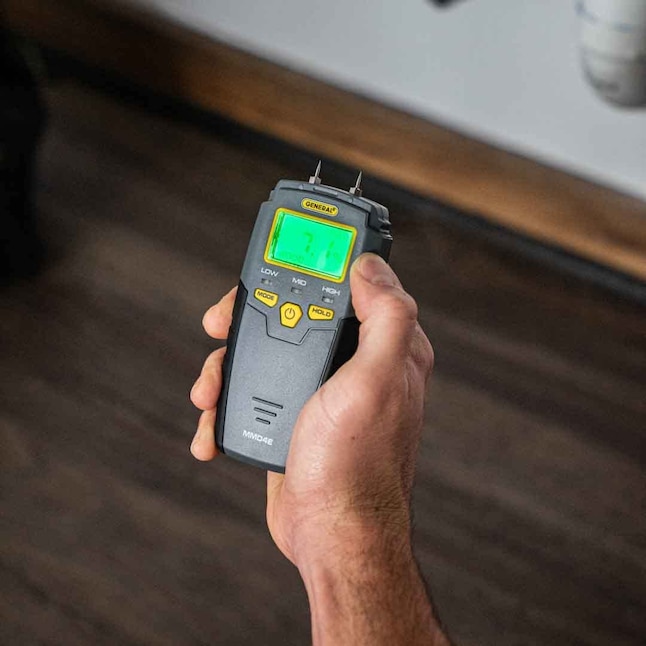The Scientific Research Behind Moisture Meters: Just How They Function and Why They're Necessary
The Scientific Research Behind Moisture Meters: Just How They Function and Why They're Necessary
Blog Article
Comprehending the Importance of a Moisture Meter in Preventing Mold and Water Damages in Your Home
In the world of home maintenance, the visibility of moisture can usually be a quiet yet formidable enemy, capable of causing pervasive mold and mildew development and perilous water damages if left untreated. Recognizing the value of a dampness meter in this fight is not merely a choice yet a strategic necessity.
Importance of Moisture Detection
Effective moisture detection approaches are essential for safeguarding homes and stopping potential mold development and water damage. Moisture can leak into different building materials, causing structural problems and health threats. By making use of a moisture meter, building proprietors can proactively recognize locations susceptible to excess moisture, permitting timely intervention and mitigation techniques.
Moisture meters provide accurate analyses of moisture degrees in different materials such as wood, drywall, and concrete. This information helps in determining locations of concern, even in hard-to-reach or concealed places. Early discovery of moisture buildup makes it possible for punctual fixings or changes to stop additional damages.

How Moisture Meters Job
Wetness meters play an essential duty in the aggressive identification of excess moisture, aiding in the avoidance of potential mold and mildew growth and water damages by providing accurate analyses of moisture levels in various building materials. Some progressed moisture meters pin both incorporate and pinless innovations for thorough dampness discovery. Comprehending how moisture meters function is necessary for accurate and timely moisture level analyses, making it possible for effective precautionary measures against mold and water damages.
Detecting Early Indication
Upon initial inspection of a residential property, identifying refined signs of excess moisture comes to be vital in the very early detection of prospective mold development and water damages. Some typical early warning signs include moldy odors, water spots on walls or ceilings, peeling paint or wallpaper, and warped or blemished surface areas. Moldy smells frequently indicate the presence of mold or mildew, even if no visible indications are evident. Water stains can signify leaks or seepage, while peeling off paint or wallpaper may be an outcome of wetness jeopardizing the adhesion of these materials to the surface area. Distorted or stained surfaces, such as bending floorboards or blemished drywall, are clear indicators of water damages. Additionally, a boost in allergy signs and symptoms or breathing problems amongst passengers might suggest the existence of mold due to why not look here excess dampness. By quickly identifying and dealing with these early indication, property owners can minimize the risk of extensive mold growth and water damage in their residential or commercial properties.
Preventing Mold Growth
Identifying early warning indicators of excess dampness within a residential property not only makes it possible for prompt detection of prospective mold growth and water damage but additionally serves as an aggressive action in protecting against the proliferation of mold and mildew. To properly protect against mold development, it is crucial to resolve any sources of wetness quickly.
Along with addressing moisture sources, keeping interior humidity degrees listed below 60% can significantly prevent mold and mildew growth. Appropriate air flow, ample insulation, and utilizing air conditioners or followers can assist manage indoor humidity degrees. Keeping an eye on moisture degrees in areas vulnerable to moisture, such as go basements and crawl spaces, using a dampness meter can also aid in very early discovery of elevated wetness degrees and prospective mold growth. By taking positive steps to protect against excess moisture and mold growth, house owners can secure their property and interior air quality.
Advantages of Normal Surveillance
Routine tracking of dampness degrees in a residential property can play an important function in keeping a healthy interior environment and avoiding potential mold and water damage. By consistently inspecting dampness levels, property owners can detect any kind of issues quickly and take necessary activities to stop mold and mildew development and water damages. Among the essential benefits of normal tracking is early detection. By determining and attending to high wetness levels at an early stage, home owners can step in prior to mold and mildew has the opportunity to establish and spread. This proactive strategy can save both money and time in the future by preventing considerable mold removal and repair costs.
Moreover, normal tracking permits homeowners to track patterns and fads in moisture degrees over time. Eventually, the regular surveillance of moisture levels equips property owners to secure their building, protect their health, and maintain the stability of their interior environment.

Final Thought

By using a dampness meter, home owners can proactively identify locations vulnerable to excess dampness, enabling for prompt treatment and mitigation approaches.

Keeping track of wetness degrees in areas prone to dampness, such as basements and crawl spaces, making use of a moisture meter can also aid in very early detection of elevated dampness degrees and possible mold and mildew growth. (Moisture Meter)
Report this page